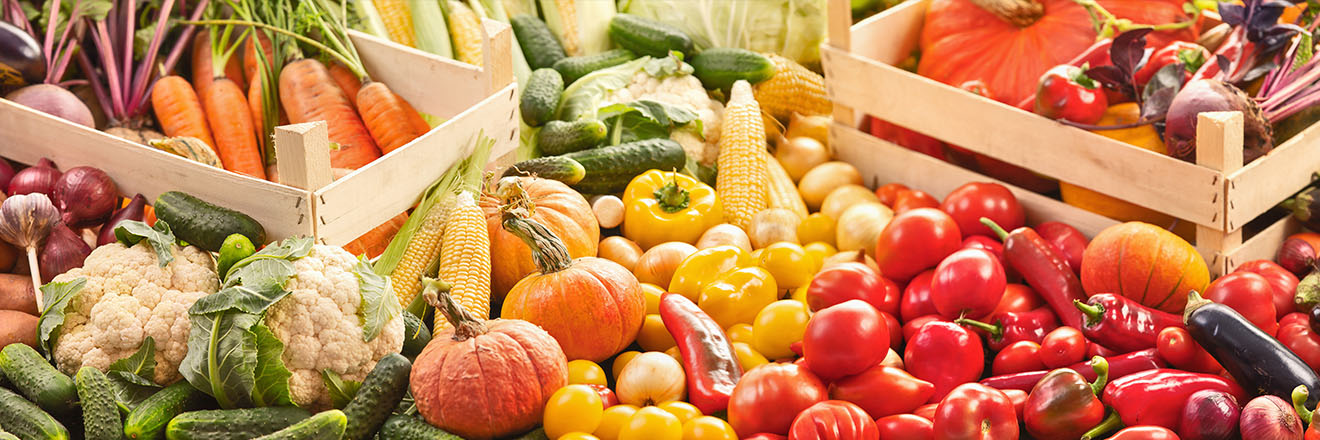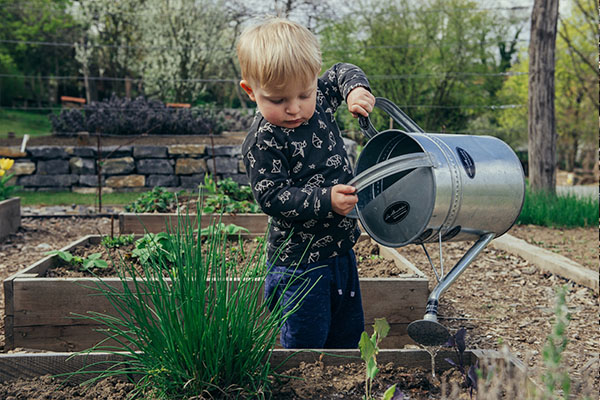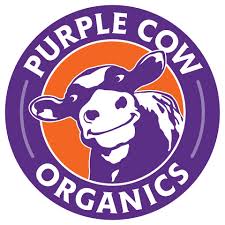
Landscaping Supply for Vegetable Gardens: Soil Mixtures
Many of us eagerly await the summer Farmer’s Markets and their fresh vegetables. At the same time, more people are bypassing the market and becoming their own “farmer” by growing their own fresh vegetables in their own garden.
Most varieties of fruits and vegetables sold in grocery stores are adapted for commercial farming. Through selecting and breeding specific traits into the plants, the commercial production develops vegetables for more output per plant. It also aims to:
- have the vegetables ready for harvesting all at once
- last longer on the shelf
- be uniform in size and shape
- ship without bruising
- oftentimes, finish ripening on trucks during transport

Even when you purchase organic vegetables, this structured approach can still compromise flavor. The taste and texture of a grocery-store tomato cannot compare to that of one freshly picked from your own garden. When you grow and harvest your own food, you know where it came from, how it’s been grown and how long it’s been from harvest to table.
Gardening Soil: Three Integral Factors
The best vegetable gardening soil mixtures include three key elements: moisture control, primary planting media and organic fertilized soil.
- Moisture control. Vegetable gardens depend greatly on moisture, and a good soil mixture with plenty of organic matter will hold more of it.
Too much moisture can cause root rot, however. So can the wrong kind of sand, as sand either holds or sheds moisture depending on the type used in the mixture. Coarse sand will support water drainage in raised garden beds, which can tend to hold water and get soggy. Fine sand for in-ground gardens and lawns will help retain moisture.
A gardening soil mixture that includes composted soil with horse manure – which naturally stores moisture – is best used without adding sand. - Primary planting media. A good vegetable gardening soil mixture with plenty of quality topsoil is essential – but topsoil alone will fall short of what’s required for the garden to thrive.
- Organic fertilizer. A quality vegetable gardening soil containing a vigorous organic fertilized soil (compost) is important as well. While compost adds vital nutrients to the soil for good soil health, too much compost can hurt plants and burn tender roots.
If all of that leaves you a little confused, don’t worry. The soil specialists at Tim Wallace Soil Mix Supply have developed the following vegetable gardening soil blends using the optimal ratio of premium materials that will be perfect for the vegetable garden you’re planning.
 Tim’s Original Garden Mix: 50% topsoil, 25% organic compost, 25% fine sand
Tim’s Original Garden Mix: 50% topsoil, 25% organic compost, 25% fine sand
Even the best compost can dry out quickly, so mixing it with topsoil and fine sand is a great way to provide balanced bedding for vegetables. This soil mixture gives you the best of all worlds since topsoil offers a robust home for roots with plenty of water, compost provides a boost of nutrients and sand helps with soil porosity and water retention.
Enriched Vegetable Garden Mix: 50% topsoil, 50% composted horse manure
Topsoil isn’t just nutrient-dense – it stays that way. Its ability to retain its nutrients is sustaining for plant life. Farmers also greatly value horse manure because composting it super-charges the compost pile while increasing soil fertility, regeneration and high-quality yields.
Although not high in phosphorous and potassium, horse manure is nitrogen-rich, making it highly effective on non-flowering plants such as garden vegetables. Our enriched vegetable garden mix requires no sand, as the composted horse manure has its own water-retention traits.

Raised Bed Mix: 50% topsoil, 25% course sand, 25% organic compost
Gardening magazine’s trial of the best soil mixture for raised beds found that a blend of 50% topsoil, 25% coarse sand and 25% compost was best. It determined that although the mix was quite heavy to put in the bed, it didn’t settle much and was simple to dig. It also was easy to weed by hand, soil fertility was good and the beds produced the best yield.
Unlike fine sand, coarse sand will create more porosity and allow more drainage. It is desirable for making a dense soil such as clay more porous. Flowers, tomatoes and root vegetables such as beets and radishes are all examples of plants that can grow well in sandy soil with coarse sand. Course sand is the preferred choice for raised-bed gardens of all kinds.
Organic composted soil, which is a by-product of recycled organic components such as leaves, vegetable scraps and small twigs, turns into a rich soil amendment gardeners refer to as “Black Gold.” It is the perfect compost amendment for your raised bed. The topsoil also contains its own rich mix of nutrients that you need for healthy plants.

NEW THIS YEAR – “RAISED BED FILLER MIX”
Tall raised beds make gardening much easier. However, the taller the bed the more material that is required to fill it.
To help keep your garden more affordable we are now offering a Raised Bed Filler Mix – a blend of 50% topsoil and 50% premium ground wood chips. Adding Raised Bed Filler reduces the amount of Raised Bed Mix you need to purchase while adding critical organics to the bottom of your garden bed.
To calculate what you would need, simply use the 50/50 method – 50% of the total required in Raised Bed Mix and 50% of the Filler Mix. Example: If your bed requires 4 cubic yards total – order 2 yards of our Raised Bed Mix and 2 yards of the Raised Bed Filler. Price: $95 / cubic yard, sold in full cubic yards only and will be delivered at the same time as your Raised Bed Mix.
Premium Compost Mix: 50% mushroom compost soil, 50% organic compost
Over time, gardening soil can become depleted of vital nutrients. When that happens, plant growth, production and health will suffer. To keep your soil fertile and high in organic components, a re-application of compost every two or three years is important.
Our premium compost mix is a powerful blend of two great organic fertilized soils that will rejuvenate and energize your vegetable garden. Because this mix has no topsoil, it should be introduced only into existing gardens that still have a sufficient amount of black dirt.
Premium Garden Mix: 50% topsoil, 25% Purple Cow Compost, 25% fine sand (in ground gardens)
Premium Raised Bed Mix: 50% topsoil, 25% Purple Cow Compost, 25% coarse sand (garden beds raised above the ground)
Nationally known and trusted Purple Cow Classic Compost is a proven, time-tested way to add beneficial microbes, carbon and balanced nutrients to your vegetable gardening soil. Purple Cow compost is OMRI listed (Organic Materials Review Institute) as suitable for organic farming.
A 100% plant-based and organic component, the Purple Cow Compost improves soil structure and porosity in creating a better plant-root environment. It also reinforces nutrient retention and use while reducing nutrient loss caused by leaching. Purple Cow includes humus to assist in soil aggregation and nutrient availability for the plant as well.
Even the best compost can dry out quickly, so mixing it with topsoil and fine sand is a great way to provide balanced media for lawns and bedding for flowers and vegetable plants. This soil mixture provides three top benefits for your vegetable garden:

Topsoil will offer a healthy home for roots with plenty of water.
Purple Cow Compost will provide a healthy boost of nutrients.
Fine sand will help with soil porosity and water retention.
Our premium garden mix will save you both time and effort as everything your vegetables need – a prepared blend of high-quality black dirt, fine sand and naturally fertilized soil – is ready to be spread into your garden.
New to Our Soil Blend Line-Up: PEAT
Peat comes from peat bogs, many of which are found in the wetland areas of northern Midwest states, Canada, Europe and even New Zealand. The peat we use is sourced from the peat bogs of northern Minnesota. Peat bogs are formed over long periods of time as organic materials such as sphagnum moss become submerged and partially decompose. Since there is an abundance of water in these bogs, the decomposition of this organic matter is slowed by the anaerobic (without air) conditions present. The product created from organic matters submerged into the bogs is called peat. And because this material is essentially formed underwater, the peat is preserved almost indefinitely.
Peat is not commonly used as a standalone product. In fact, by itself it’s not a good growing medium beyond starting seeds from scratch. Even though peat can help your soil retain nutrients, it hardly contains any nutrients at all in and of itself. Peat also doesn’t add sufficient nutrients to the soil for healthy plant growth on its own so you have to add other organic components like topsoil along with it.
As a Soil Amendment
- Water Retention: One of the significant attributes of peat is its ability to retain water. Its fibrous structure creates pore spaces within the soil, enhancing water retention and preventing rapid moisture loss. This quality proves particularly useful in soils that tend to dry out quickly – like clay.
- Organic Soil Amendment: Peat serves as an excellent organic amendment, enriching the soil with organic matter as it decomposes further over time. This enrichment fosters a favorable environment for beneficial microorganisms that contribute to soil health. Peat can be added to your soil to achieve any of the following results:
- Help drier, sandier soils retain moisture for longer.
- Help heavy clay soils loosen up and have better aeration and drainage.
- Its fibrous nature facilitates better soil drainage and root development.
- Increase the amount of organic material in the soil, which breaks down over time to provide nutrients.
Gardening experts seem to unanimously agree, that peat used in a ratio of no more than 3 to 1 is the best soil blend combination. We prefer a slightly more conservative approach and blend our soil mixes made with peat at a rate of 25% peat. This percentage amount provides the moisture and nutrient retention qualities of the peat that complement and improve the other organics used in the blend while not making drastic changes to the soil’s pH.
Peat Garden Mix: 50% topsoil, 25% fine sand, 25% Peat (in ground gardens)
Peat Raised Bed Mix: 50% topsoil, 25% coarse sand, 25% Peat (above the ground gardens)
Landscaping Supply for Vegetable Gardens: Contact Us Today
A flourishing vegetable garden provides more than tasty, healthful and organic food – it’s also beautiful to look at. With the right landscaping materials from Tim Wallace Soil Mix Supply, you can make the farm-to-table trip a matter of feet instead of miles. Contact us at (630) 759-1080 to further discuss the ideal soil for your vegetable gardening plans!
